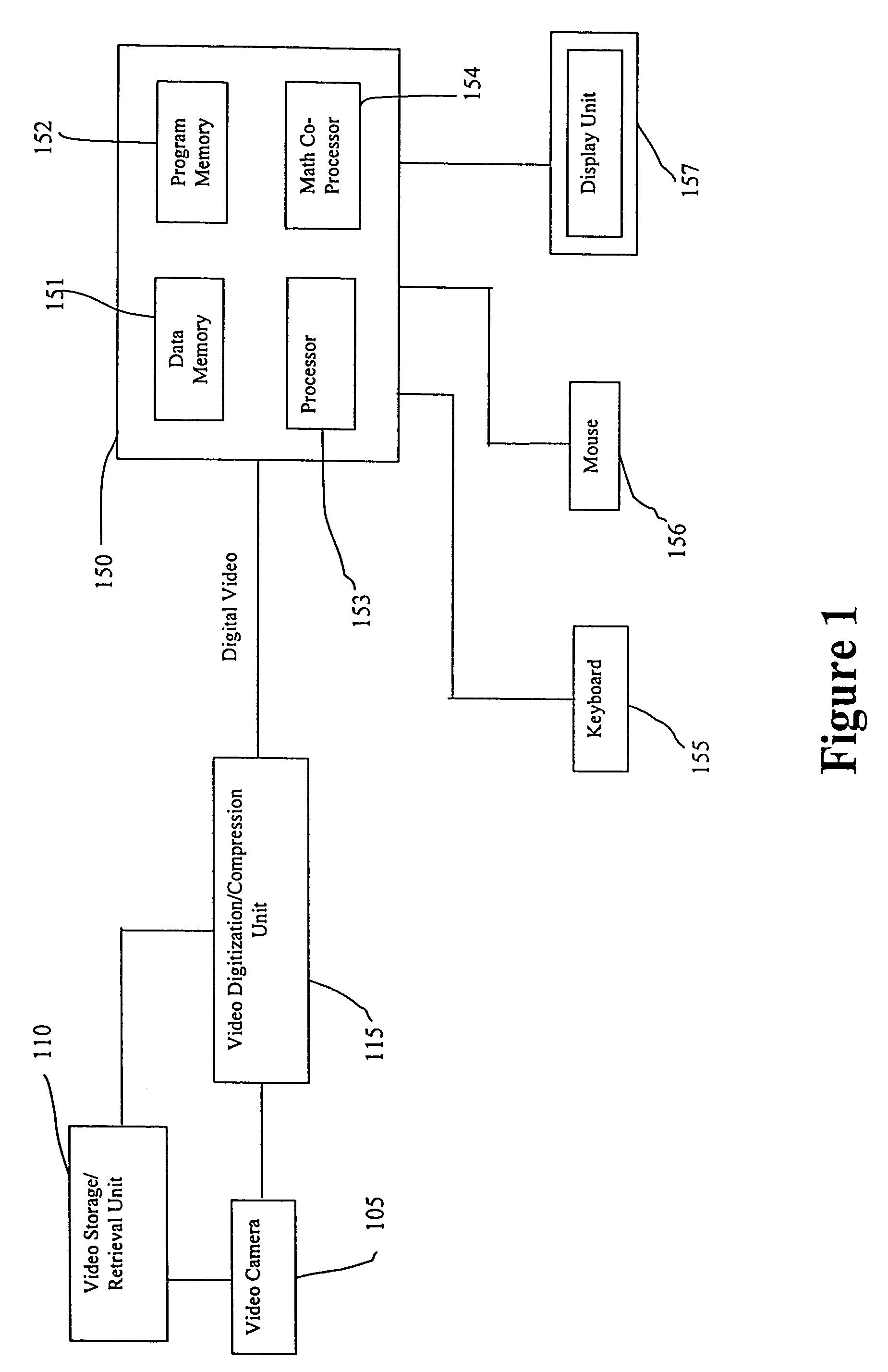System and method for object identification and behavior characterization using video analysis
a video analysis and behavior characterization technology, applied in the field of object identification and recognition, can solve the problems of affecting the phenotypic effects of gene manipulation on mice, the difficulty and the serious bottleneck of genetically engineered mice, etc., to achieve the effect of detecting the phenotypic effects of gene manipulation in mi
- Summary
- Abstract
- Description
- Claims
- Application Information
AI Technical Summary
Benefits of technology
Problems solved by technology
Method used
Image
Examples
Embodiment Construction
[0044]The past few years have seen an increase in the integration of video camera and computer technologies. Today, the integration of the two technologies allows video images to be digitized, stored, and viewed on small inexpensive computers, for example, a personal computer. Further, the processing and storage capabilities of these small inexpensive computers has expanded rapidly and reduced the cost for performing data and computational intensive applications. Thus, video analysis systems may now be configured to provide robust surveillance systems that can provide automated analysis and identification of various objects and characterization of their behavior. The present invention provides such systems and related methods.
[0045]In general, the present invention can automatically find the patterns of behaviors and / or activities of a predetermined object being monitored using video. The invention includes a system with a video camera connected to a computer in which the computer i...
PUM
 Login to View More
Login to View More Abstract
Description
Claims
Application Information
 Login to View More
Login to View More - R&D
- Intellectual Property
- Life Sciences
- Materials
- Tech Scout
- Unparalleled Data Quality
- Higher Quality Content
- 60% Fewer Hallucinations
Browse by: Latest US Patents, China's latest patents, Technical Efficacy Thesaurus, Application Domain, Technology Topic, Popular Technical Reports.
© 2025 PatSnap. All rights reserved.Legal|Privacy policy|Modern Slavery Act Transparency Statement|Sitemap|About US| Contact US: help@patsnap.com



